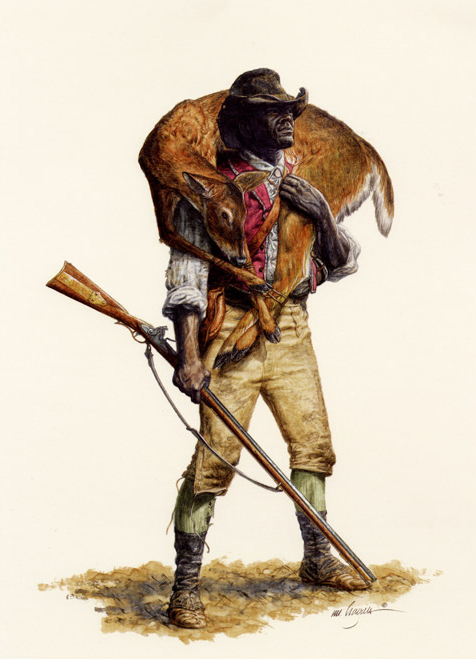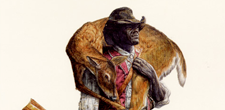Michael Haynes’ artwork has been enjoyed by even the most casual Lewis and Clark fan in publications, museum displays, historical re-enactments, and hundreds of interpretive signs along the historic trail. His 2003 collaboration with Robert J. Moore, Jr., Lewis & Clark: Tailor Made, Trail Worn, the Army Life Clothing, & Weapons of the Corps of Discovery, Farcountry Press, changed the trajectory of expedition interpretation from fur traders to professional soldiers in the 1803 American frontier. The book remains the standard reference used by historical re-enactors and museum displays. The artist describes his attention to detail and historical accuracy in Sgt. Floyd’s Burial.
Featured Works
February 23, 1804
Orders for blacksmiths
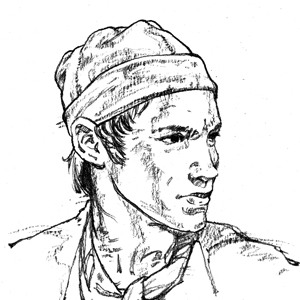
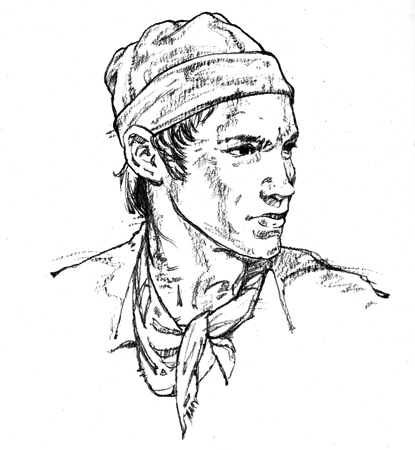
Winter Camp at Wood River, IL Little is recorded about the day other than reporting that the weather is clear and cold. Likely, the blacksmiths continue the work assigned to them recently by Lewis.
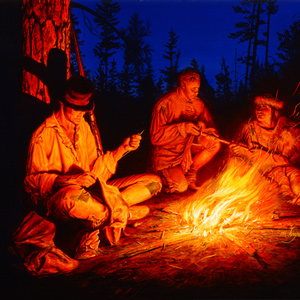

His journal begins, “about 3 Oclock P.M. Capt. Clark and the party consisting of three Sergeants and 38 men who manned the Batteaux and perogues. we fired our Swivel on the bow hoisted Sail and Set out in high Spirits for the western Expedition.”
December 25, 1803
Wood River Christmas
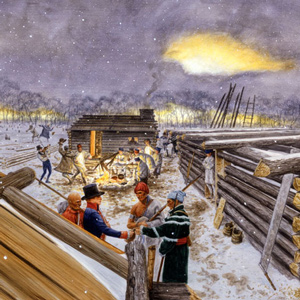

Winter Camp at Wood River, IL The men celebrate Christmas by drinking, hunting, and frolicking. The visiting Indians heard a rumour that they cannot trade because the Americans now have possession of Louisiana, and Drouillard agrees to join the expedition.
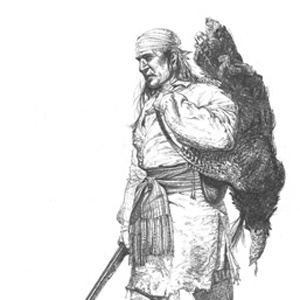

Drouillard was one of the captains’ three most valuable hands. He was also the highest paid member after the captains, he shared the Charbonneaus’ tent with the family and the captains, and he was the only man Clark seemed to call by first name in the journals.
November 6, 1804
The northern lights
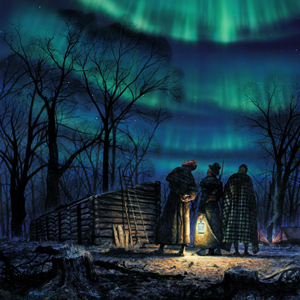

Fort Mandan, ND The guard wakes the captains so that they can view the Aurora Borealis. During the day, Joseph Gravelines and two engagés head home. In Washington City, Thomas Jefferson shares news of the expedition with Lewis’s brother Reuben.
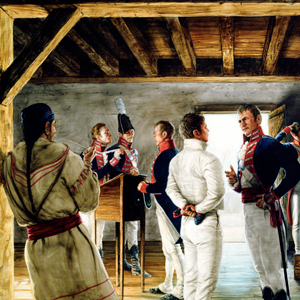

“…it is surprising how close the Spanish came to intercepting Lewis and Clark, in 1804, and again in 1806. A matter of several days’ march… prevented an encounter that could have resulted in a major incident between the two nations.”
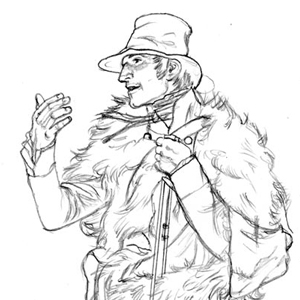

Colter left a legacy of western lore, not the least of which was his famous run from the Blackfeet Indians and his exploration of “Colter’s Hell.” Yet his contributions to the expedition were also many.
The Hunters’ Final Tally
by Joseph A. Mussulman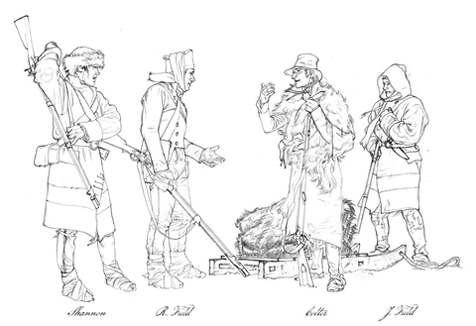

Historian Arlen Large tallied the journalists’ references to hunters by name, and came up with a list of nine who were mentioned in connection with “hunting episodes” a total of twenty-five times or more–a purely arbitrary cutoff number. George Drouillard led the list.
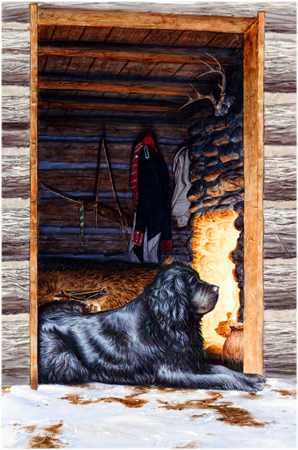
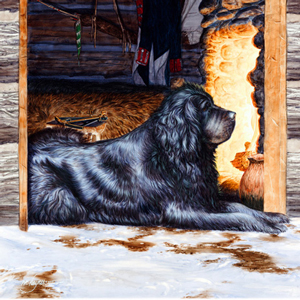
The Shoshones, like all other Indian people, had owned, bred, trained, used, and loved dogs from the dimmest days of their own origins. What was it, then, about this dog that thrilled them so? Lewis called it sagacity.
March 3, 1804
Refusing guard duty
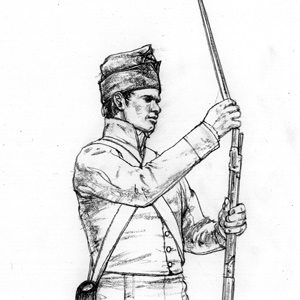

Wood River Camp, IL In response to reported abuses, Lewis is ‘mortified’ by Reubin Field’s refusal to perform guard duty and implores everyone to follow Srgt. Ordway’s orders while the captains are away.
John Shields
(1769–1809), Private


During the damp winter at Fort Clatsop and throughout 1806, the journals speak more and more often about Shields’ life-sustaining work as gunsmith. Certainly the guns had seen hard use.
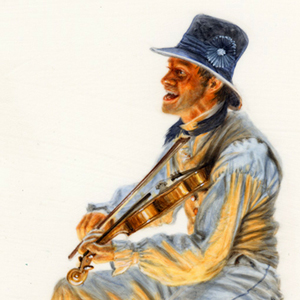

The captains sent four men to retrieve Gibson, “who is so much reduced that he cannot stand alone and…they are obliged to carry him in a litter.” They arrived on February 15, and Lewis went to work sweating the “veery languid” Gibson with saltpeter and dosing him with laudanum for sleep.
April 15, 1804
Paying Mrs. Cane
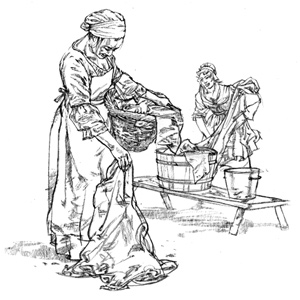

At winter camp on the River Dubois, Clark pays Mrs. Cane for her services as washerwoman and seamstress. A boat heading up the Mississippi River passes by, and several men hunt or practice shooting.
March 13, 1805
Busy blacksmiths
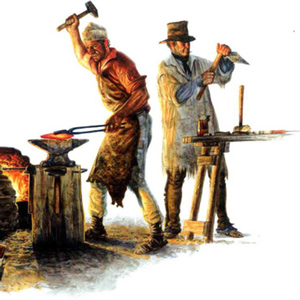
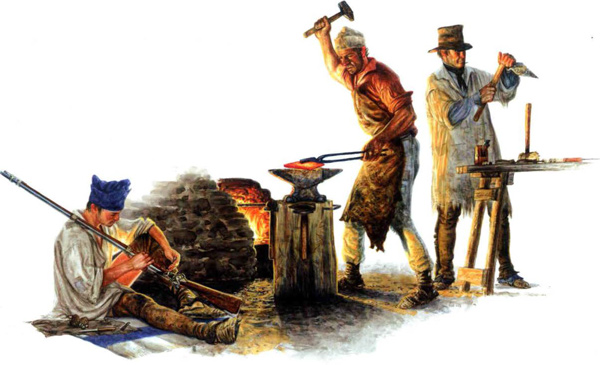
Fort Mandan, ND The Indians living around Fort Mandan are anxious for the blacksmiths to make war axes before the expedition leaves for the western sea.
September 12, 1806
Old acquaintances
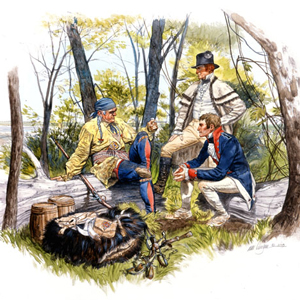

St. Joseph, MO The captains meet four old acquaintances, an old military companion and three men from the 1804 upriver trip.Joseph Gravelines and Pierre Dorion are acting under orders from President Thomas Jefferson, which the captains review and modify.
June 8, 1804
The Lamine River
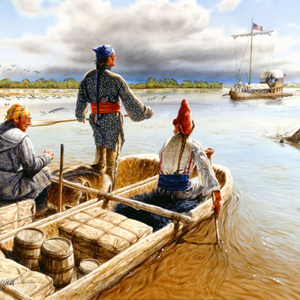

During the day, they meet three French traders coming down the river who are out of provisions and powder. They learn that lead ore has been found along the Lamine (The Mine) River.
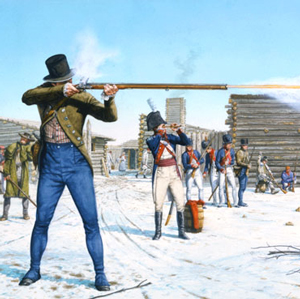

Reubin and his brother Joseph (about a year older) were among the best hunters, but Reubin was possibly the better shot. He was, at least, at Camp Dubois on 16 January 1804, when Clark’s men set up a shooting match with some local residents.
August 26, 1806
Passing the Bad River
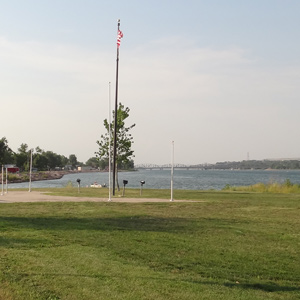

Fort Thompson, SD While passing the Bad River, Clark recalls how the Lakota Sioux attempted to stop them in 1804. They make about sixty miles reaching an area where they now expect to find those Indians.
November 11, 1805
Kathlamet visitors
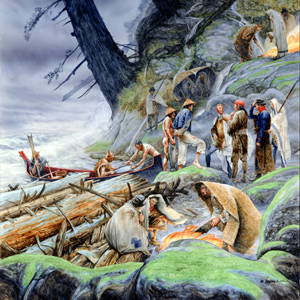

Small Nitch near Knappton, WA The Corps makes the best of their poor location exposed to high waves and driving rain. Five Kathlamet visitors skillfully cross the river in a canoe loaded with sockeye salmon.
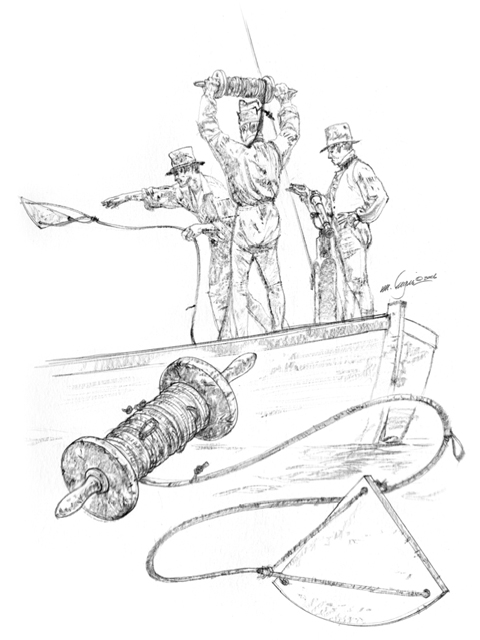
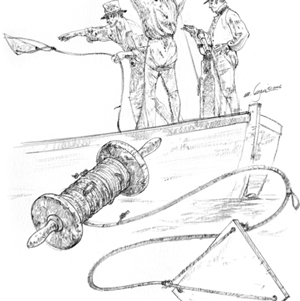
This device was typically used for measuring the speed of a vessel at sea, but it could also be used to measure the velocity of a river’s current. It consisted of four parts: a log-ship, or log-chip; a specially calibrated log-line; a reel to hold the log-line; and a log-glass, or sand-glass.
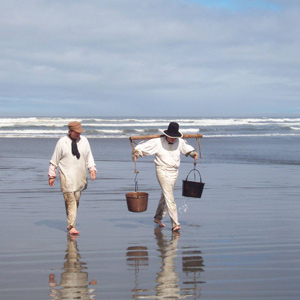

On 23 January 1806, Lewis dispatched Howard and Werner to the Salt Camp on the ocean beach, to bring back a supply of salt. When they had not returned by the 26th, Lewis feared they had gotten lost.
Silas Goodrich
(possibly 1778–unknown), Private
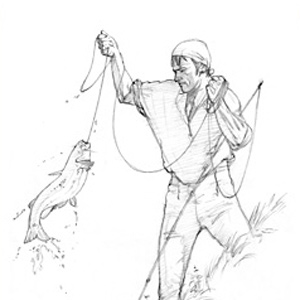

Silas Goodrich was the expedition’s principal fisherman. He also did well when trading for food with Indians from time to time.
January 4, 1805
Gifts for Little Raven
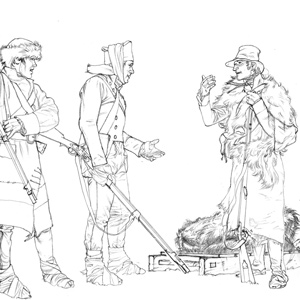

Fort Mandan, ND The weather warms enough to encourage hunters to go out. They kill a buffalo calf. Little Raven visits the fort, and he is given gifts.
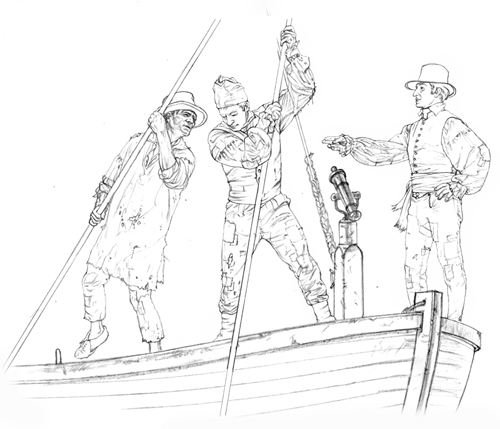
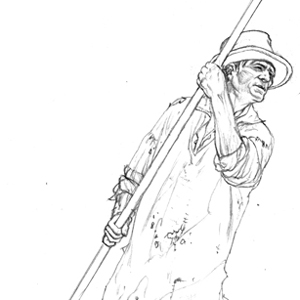
At a place where “one false Step of a horse would be certain destruction,” Frazer’s pack horse took that fateful step, lost its footing and rolled with its load “near a hundred yards into the Creek,” over “large irregular and broken rocks.”
Hugh Hall
(b. 1772 and d. between 1820 and 1831), Private
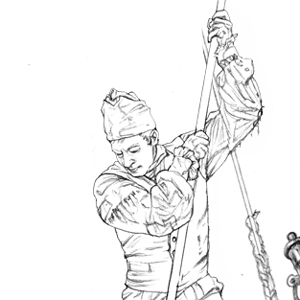

As if to confirm the captains’ poor evaluation of the new arrivals from Fort Southwest Point, a scant nine days after his arrival, Hall was among a group of six or seven men who got drunk on New Year’s Eve.
July 4, 1806
Dangerous roads
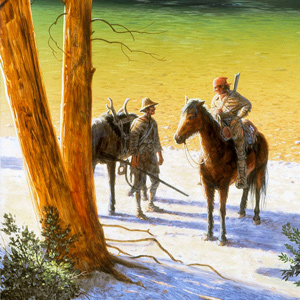

Lewis travels east on “Cokahlahishkit”—the Road to the Buffalo—along the Blackfoot River. Clark travels south up the Bitterroot River and celebrates the Fourth of July with a “Sumptious Dinner”.
Army Life in 1803
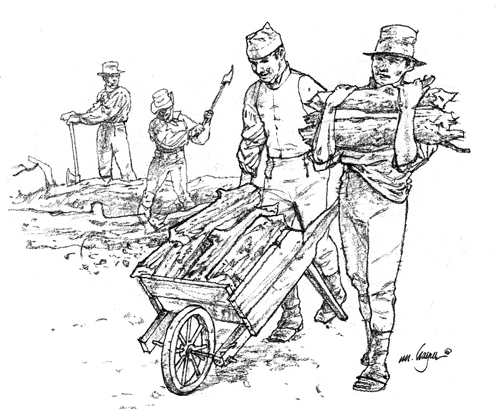
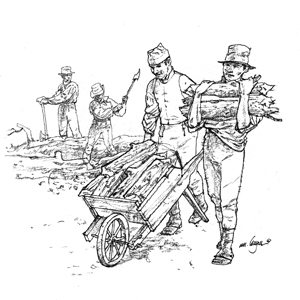
Life in the U.S. Army in 1803, especially on the western frontier, provided little free-time, but the day’s alcohol ration gave some relief from the day’s fatigue duties.
September 15, 1806
Lewis and Clark Point
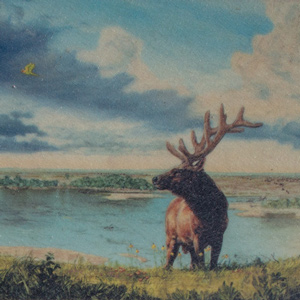

Little Blue River, MO Clark and Lewis climb a hill in present-day Kansas City and find it a good location for a fort. They camp near the Little Blue River where they gather pawpaw fruits.
February 2, 1804
Hays and Hay depart
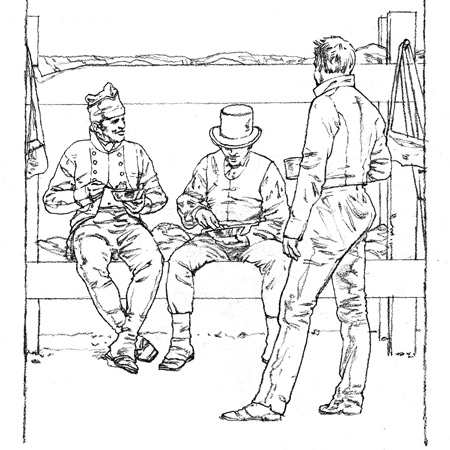

Wood River Camp, IL Clark and Lewis accompany John Hay and John Hays part-way back to Cahokia before returning to winter camp at Wood River for dinner. Clark’s poor health continues.
February 16, 1805
Scorched earth
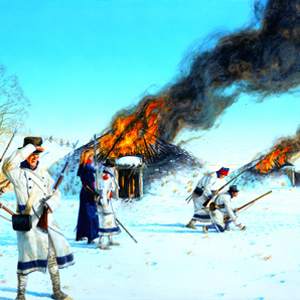

Fort Mandan, ND Lewis and his men continue their pursuit of a Sioux war party and come to an old Mandan village where the hunter’s cache of meat that has been pillaged and two lodges set afire.
January 6, 1804
The washerwoman's hut
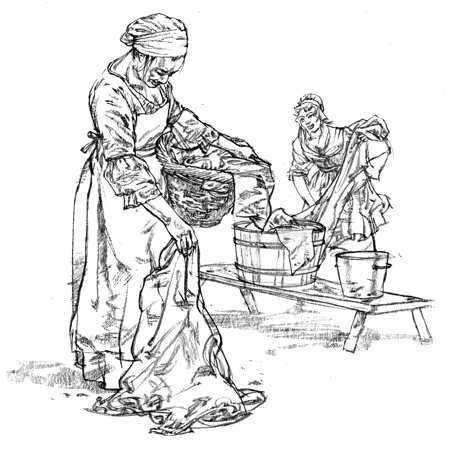

Winter Camp at Wood River, IL Clark orders the soldiers who drank and fought two days ago to build a cabin for the new washer woman. During the previous night, the falling riverbank threatens to turn over the barge.
July 3, 1805
Sewing and hunting
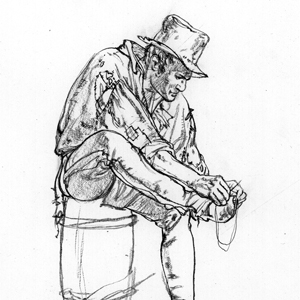

Above the Falls of the Missouri, Lewis laments they will soon be leaving buffalo country, and Sgt. Gass and Pvt. McNeal visit the falls. Loose stitches leave holes in the hides covering the iron-framed boat.
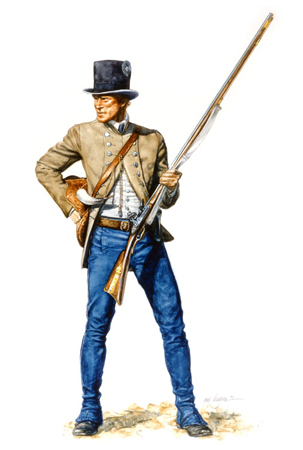
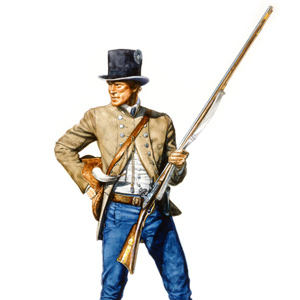
A multitude duties awaited the hapless private, and idle hands and feet were never knowingly allowed in a military camp. Most fatigue duties rewarded the men with an extra gill (1/4 of a pint) of whiskey each day.
The Lemhi Shoshones
by Stephen E. Ambrose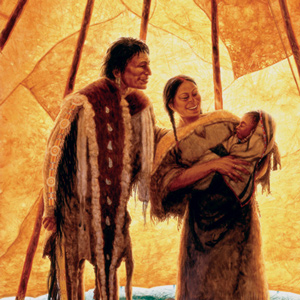

The Lemhi Shoshones were the first Indians they had seen since leaving the Hidatsas and Mandans. In describing them, Lewis was breaking entirely new scientific ground. His account is therefore invaluable as the first description ever of a Rocky Mountain tribe, in an almost pre-contact stage.
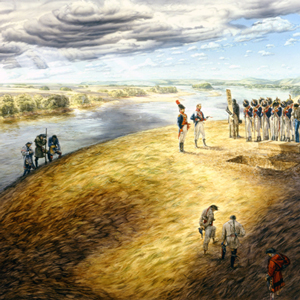

Two hundred years after the event, interpretive artist Michael Haynes explains how he created his painting “Hallowed Ground.”
March 9, 1805
Grand Hidatsa Chief Le Borgne
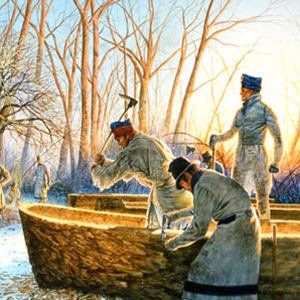

Fort Mandan, ND The Grand Chief of the Hidatsas pays his first visit to Fort Mandan. He is given gifts and Lewis demonstrates the air gun. York is the first black man ever seen by the chief.
December 28, 1803
Mackay and Evans journals
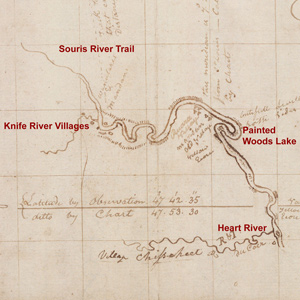

Winter Camp at Wood River, IL Lewis writes that he has a census, the Evans and Mackay journals, and three Louisiana maps. Clark reports that two deer are killed.
July 7, 1805
Waiting on the iron-framed boat
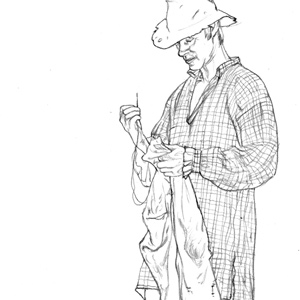

Another day is spent above the Great Falls of the Missouri waiting for the iron-framed boat cover to dry. Several men make leather and sew new clothes, and Clark gives York a dose of tarter emetic.
October 7, 1804
Grizzly bear tracks
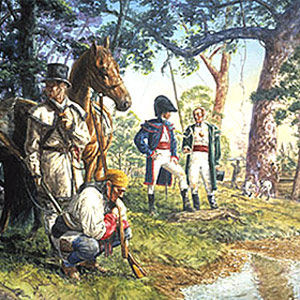

Below Mobridge, SD At the mouth of the Moreau Rive, the travelers their first grizzly bear tracks. They come across another empty Arikara village and camp above an island with many grouse.
June 22, 1805
Portaging the first dugout
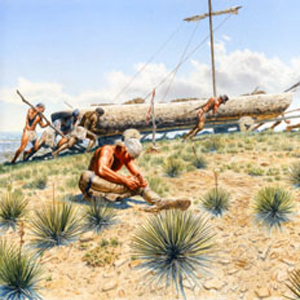

A large group hauls the first dugout canoe around the Great Falls of the Missouri. The wagon needs frequent repairs, and after dark, they abandon the heavy boat and hike the remaining ½ mile.
January 15, 1804
intoxicated helpers
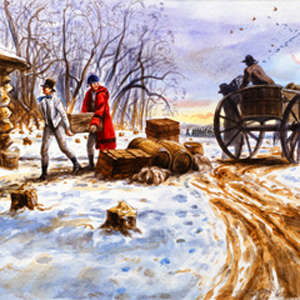

Winter Camp at Wood River, IL In a letter to his brother-in-law, Clark describes his situation at Rivière à Dubois. Several men and a wagon, all loaded with whiskey, appear at camp.
December 19, 1803
Provisions arrive
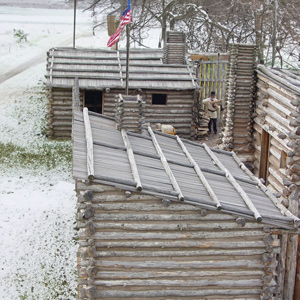

Winter Camp, Wood River, Illinois
Wagons with food and other provisions arrive at winter camp on the Wood River. In Cahokia, Lewis writes a letter to Thomas Jefferson.


On 11 May 1805, Bratton appeared, running toward the river and yelling to be taken aboard quickly. He had shot a grizzly through the lungs, and the wounded bear had chased him for half a mile. The bear had lived at least two hours after first being shot.
December 16, 1803
Eight men from Tennessee
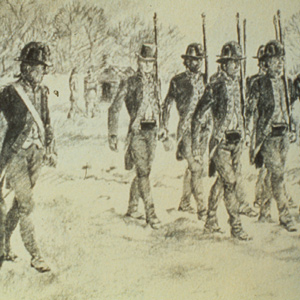

Winter Camp at Wood River, IL Clark sends Sgt. Floyd to Cahokia with letters for Lewis. Samuel Griffith, a local farmer, visits camp. In the evening, Drouillard arrives at Cahokia with eight new recruits brought from a fort in Tennessee.
January 17, 1805
Windy and cold
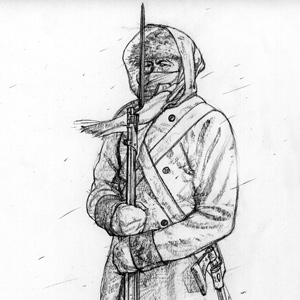

Fort Mandan, ND With a north wind, the thermometer drops throughout the day reaching -12°F by the afternoon. A few Indians visit. Elsewhere, the Spanish King authorizes the arrest of Lewis and his expedition members.
Guard Duty
by Joseph A. Mussulman

During their journey up the Missouri to the Mandan villages, security procedures were outlined in the detachment orders of 26 May 1804. The detachment orders setting forth procedures for the security of Fort Clatsop, were issued on 1 January 1806.
February 21, 1804
St. Louis affairs
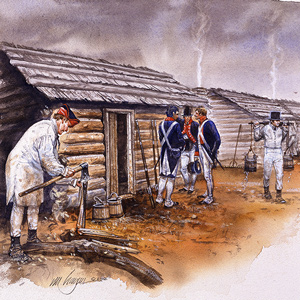

Winter Camp at Wood River, IL Lewis and Clark are in St. Louis working on the transfer of Louisiana to the United States and also organizing an Osage Indian delegation. At winter camp at Wood River, Sgt. Ordway is in charge.
November 15, 1803
Surveying the Ohio-Mississippi confluence
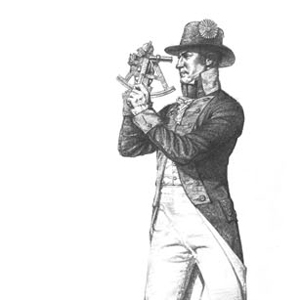

Mouth of the Ohio, IL Lewis records key measurements from Clark’s survey of the confluence of the Ohio and Mississippi rivers.
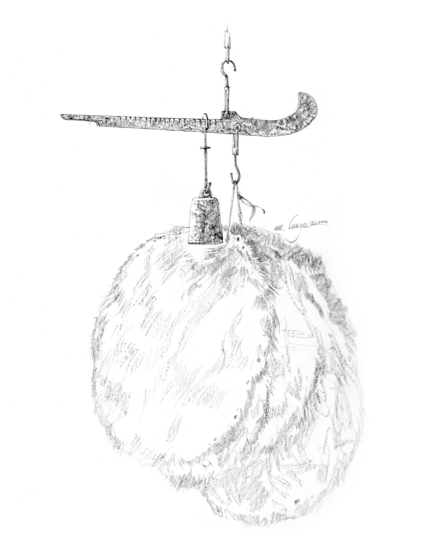

The use of a lever as a tool for measuring weight in terms of current standards of weights and measures may be at least as old as labor and commerce. It embodies a classic proposition in elementary mechanics.
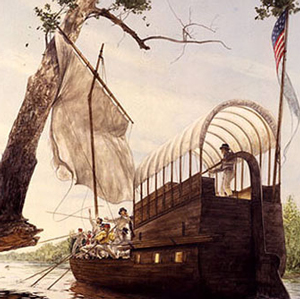

“So far, we have experienced more difficulty from the navigation of the Missouri, than danger from the Savages. The difficulties which oppose themselves to the navigation of this immence river, arise from the rapidity of it’s current, it’s falling banks, sandbars, and timber”
March 30, 1805
Possessing perfect harmony
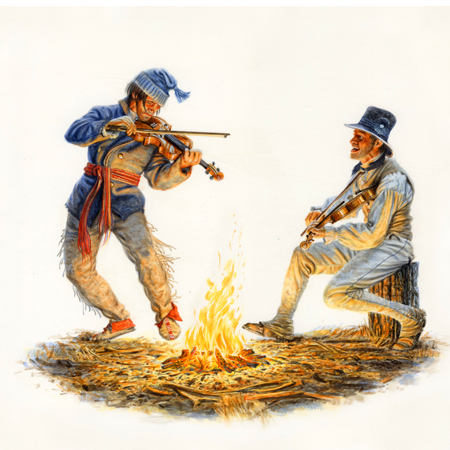

At Fort Mandan in present North Dakota, Clark reports everyone is in good spirits and working in “perfect harmony and good understanding towards each other.” Lewis takes celestial observations.
January 9, 1805
Distressingly cold
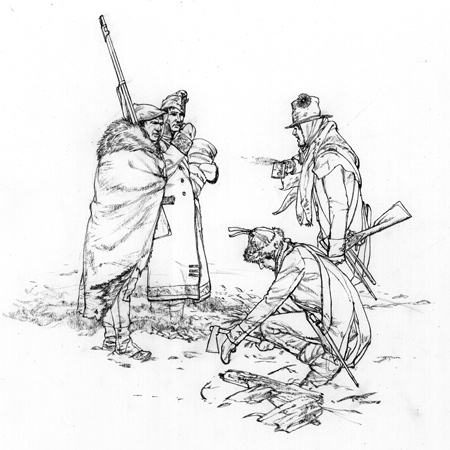

Fort Mandan, ND The weather turns cold and several Indian hunters come to the fort “nearly frosed.” An Indian boy and one expedition hunter fail to come in for the night.
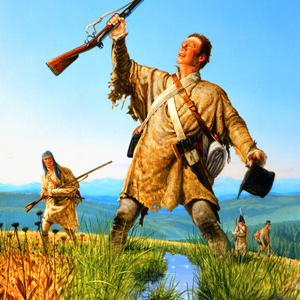

Lewis wrote that “McNeal had exultingly stood with a foot on each side of this little rivulet and thanked his god that he had lived to bestride the mighty & heretofore deemed endless Missouri.”
June 14, 1805
A great many falls
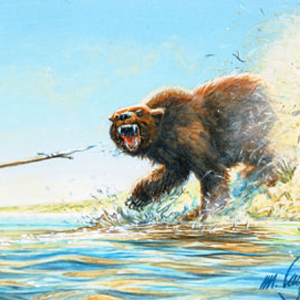

At the Falls of the Missouri, Lewis finds a continuous series of waterfalls and a combative grizzly bear. Clark and the boats struggle to make ten more miles and Sacagawea’s illness becomes “Somewhat dangerous”.
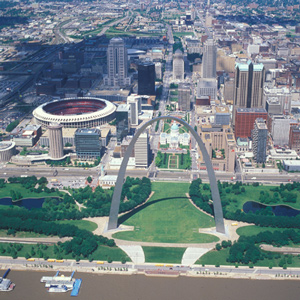

The expedition arrived on 7 December 1803, witnessed the transfer of Louisiana from Spain to the United States, and metaphorically passed through its western gate on 14 May 1804. They would not return until 23 September 1806.
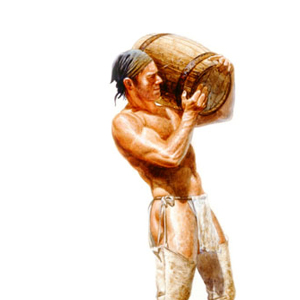

He had gotten off to a bad start, but apparently, the captains, or at least Clark, saw something in him that was worth saving. They would name Idaho’s Lolo Creek, Collins Creek.
December 14, 1803
Cutting logs
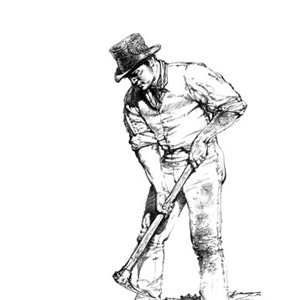

Winter Camp at Wood River, IL Preliminary work to construct winter quarters at the Wood River continues.
April 13, 1804
Provisions arrive


Clark leaves St. Louis for Camp River Dubois. He crosses the Mississippi in a boat loaded with “Sundery articles” for the upcoming voyage. An extra ration of whiskey is given to the soldiers.
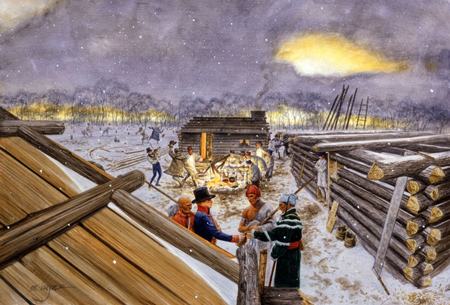

The members of the expedition began their journey as a wild bunch of hard drinking, brawling, and insubordinate rowdies. By 7 April 1805, the day the Corps of Northwestern Discovery pulled out of Fort Mandan, Lewis described his men as enjoying “a most perfect harmony.”
May 24, 1804
The Devil's Race Ground
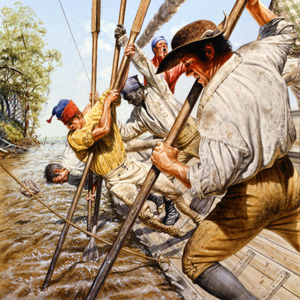

In the Devils Race Ground, the enlisted men and engagés struggle to move the boats against strong currents and shifting sands. They must go back down the Missouri two miles and try a different channel.
June 12, 1804
Old Dorion signs on


Near present Dalton, Missouri, the expedition meets a contingent of boats led by fur trader Pierre Dorion, Sr. He agrees to join as an interpreter, and one expedition member is sent back to St. Louis.
February 6, 1805
Iron, a happy resource


Fort Mandan, ND Several men from the Mandan village Mitutanka briefly visit the fort, and Lewis explains the exchange prices for iron and iron works. Clark’s group hunts near Square Butte Creek.
March 16, 1806
A "scant dependence"
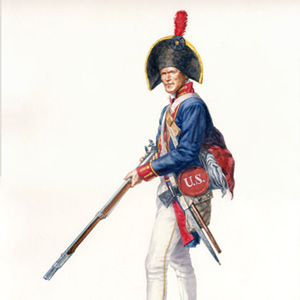

Fort Clatsop, OR Lewis writes an inventory of trade items: an artillerist’s uniform coat, five robes made from the large flag, some clothing, and little else. A run of coho salmon begins.
Joseph Field
by Barbara Fifer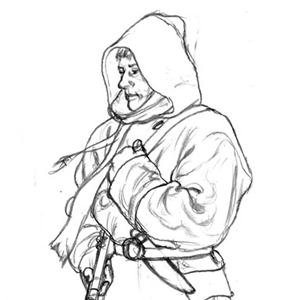

Joseph yelled to his brother Reubin, who was instantly awake, and the two sprinted for fifty to sixty paces after the natives who were clutching their guns.
The Cooper’s Howel
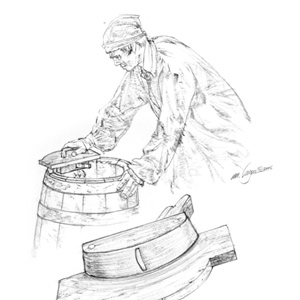

From the early 15th to the end of the 19th century a cooper was a skilled craftsman who made casks or barrels of various descriptions. The word cooper originated in an old Dutch expression meaning cask.
March 29, 1804
Courts martial
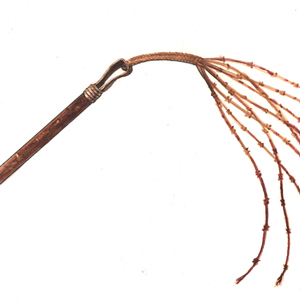

With both captains now at winter camp at the Wood River across from the mouth of the Missouri, Privates Shields, Colter, and Frazer are tried in the expedition’s first military court.
November 11, 1803
Fort Massac
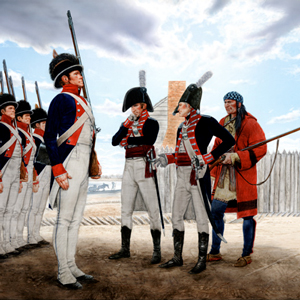

Fort Massac, IL On this day, Lewis and Clark arrive at Fort Massac near the mouth of the Ohio. They meet key member George Drouillard and Lewis writes his first (existing) journal entry since 18 September 1803.
November 11, 1804
Charbonneau's buffalo robes
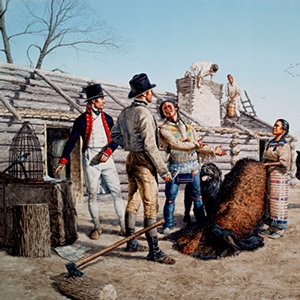

Fort Mandan, ND Toussaint Charbonneau and two Indian women bring buffalo robes. The enlisted men continue with construction, and Lewis calculates latitude.
May 23, 1804
Lewis escapes death
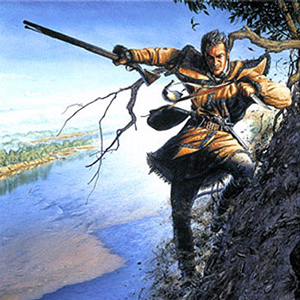

Lewis climbs the pinnacles of Tavern Rock, slips, and manages to escape with the help of his knife. In Tavern Cave, Clark adds his name among the graffiti left by earlier travelers.
May 22, 1804
Trading with Kickapoo hunters
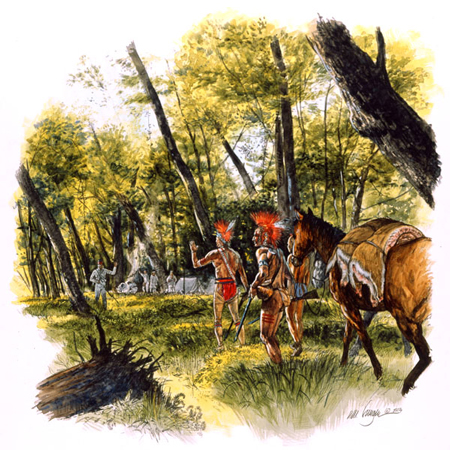
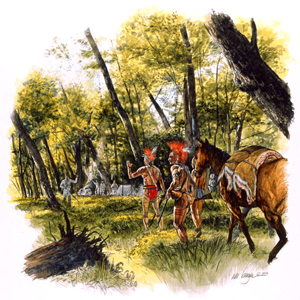
After a very rainy night, the expedition sets out at 6 am, travels 18 miles, and camps near the mouth of the Femme Osage River in present-day Missouri. They trade with some Kickapoos for four deer.
